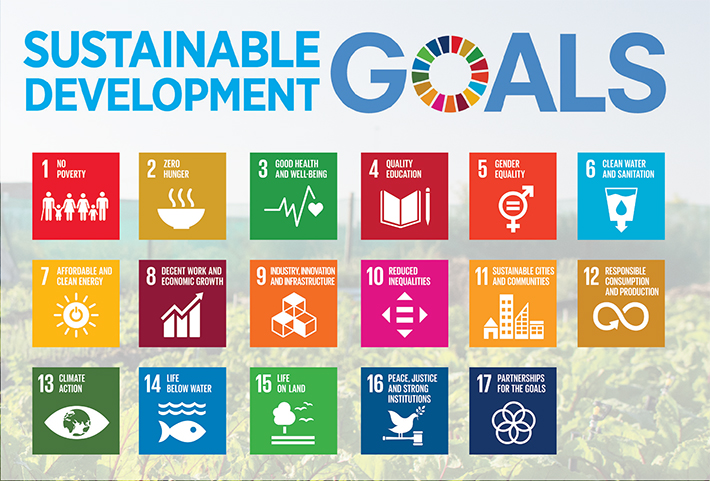
Standards and the U.N. Sustainable Development Goals
The global pandemic has left millions wondering what the world will be like once COVID-19 has been tamed. However, five years ago, the United Nations (U.N.) was already imagining — and planning for — what a sustainable future could be like for planet Earth and the living beings that inhabit it. These thoughts led to U.N. member nations approving 17 United Nations Sustainable Development Goals (see image above) that will “meet the needs of the present without compromising the ability of future generations to meet their own needs,” according to its website.
In a world trying to meet numerous natural, social, and technological challenges — and that has now been transformed by the pandemic — the U.N. SDGs have become more relevant.
Standards play a crucial role in implementing the SDGs. A recent survey of ASTM International board members provides a glimpse at how standards are used to advance sustainability issues.
According to the survey, many organizations at least reference the U.N. SDGs, while some are actively implementing the goals or using them as a metric. The SDGs play a significant role in both strategic and business planning and play a somewhat lesser role in social responsibility activities.
READ MORE: Standards Promote Sustainable Development
Survey respondents most often cited responsible production and consumption (#12) and climate action (#13) as the SDGs their organizations are pursuing or implementing. Other SDGs cited included industry, innovation and infrastructure (#9); good health and well-being (#3); and affordable and clean energy (#7).
Based on the survey results, ASTM standards are currently being used in a variety of ways, and to varying degrees, in implementing the UN SDGs. For some organizations, standards are used at a foundational level but not necessarily during strategic or business planning. One respondent noted that one exception to this was their organization using standards from the ASTM sustainability committee (E60) in SDG implementation, because these standards play a role in the evaluation and use of products in the built environment that directly link to SDGs #11 and #12.
On the other hand, one respondent described standards use in this way, which is particularly relevant to the SDG on industry, innovation, and infrastructure (#9):
“The standard is our manufacturing requirement; by implementing and conforming to these requirements during our manufacturing process, we are able to maintain product quality, discover possible process improvements/product innovation; and where possible, recommend customized solutions to our clients using our ASTM systems products.”
The survey also revealed that organizations are using a variety of key performance indicators to measure progress in meeting the SDGs. Among these are the number of standards used for each SDG and industry participation in standards conformance and certification.
The survey results include several recommendations for how ASTM could increase the role of standards in UN SDGs. A common thought was to increase awareness of SDG-relevant standards throughout the supply chain of various industries. Publishing a list of standards relevant to each of the SDGs was also suggested.
Diving deeper, it was noted that ASTM staff could work closely with the committees to communicate how new or newly revised standards, and the changes they entail in products or systems that they govern, will support the goals and particular SDGs.
One respondent noted that the most impactful action that ASTM technical committees could take would be for its committees to develop new standards focused on advancing specific SDGs.
Finally, one respondent echoed the idea of developing new standards while expressing confidence in the role of ASTM standards by saying, “If there is a need for a new standard on any topic needed for a market or an industry to address the UN SDGs, then the ASTM International model for standards development is most well-suited, lean, agile, and efficient enough to develop those missing standards.” ■
 SN Home
SN Home Archive
Archive Advertisers
Advertisers Masthead
Masthead RateCard
RateCard Subscribe
Subscribe Email Editor
Email Editor